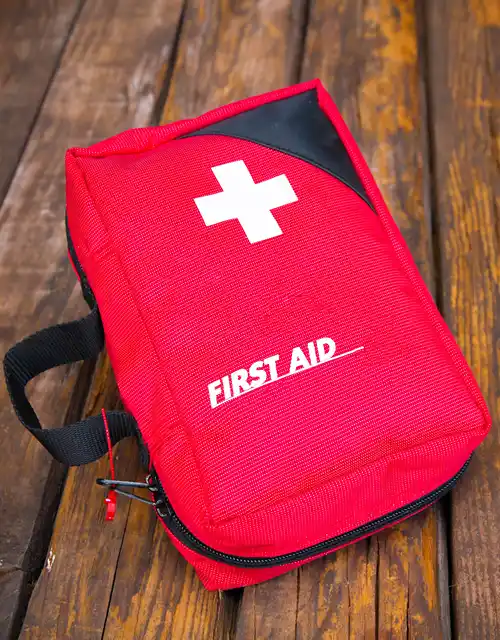How to Choose High-Quality Online ESL Classes as a Teen or Adult
Learning English opens doors — to better jobs, international study, travel, and everyday communication online. For many teens, university applicants, and working adults, studying on the internet is the most practical option. You can learn from home, study around your schedule, and connect with teachers and classmates from all over the world.
But not every website that promises quick results is trustworthy. Some platforms are poorly organized, some oversell what they can do, and others don’t care enough about privacy or digital safety. Choosing wisely matters, especially if you’re sharing personal information or payment details.
The good news: there are plenty of reputable options for English as a second language classes online. You just need a simple checklist to separate serious programs from random content.
Why So Many People Are Moving to Online ESL
Online ESL is popular with older students because it fits real life:
- Busy schedules: You can learn before work, after class, or on weekends.
- Global access: Teachers and classmates can be anywhere in the world.
- Lower cost: No commute, and many programs are more affordable than local schools.
- Comfort: You can study from home, which is less stressful if you’re shy or rusty.
The challenge is not “Can I find something?” but “How do I choose something good and safe?”
Step 1: Start with Safety and Trust
Before you worry about lesson content, check basic safety and credibility:
- Clear “About” and contact information: A serious provider explains who they are, where they’re based, and how to contact support.
- Transparent privacy policy: Your data, email, and payment information should be handled carefully, not sold off to random advertisers.
- Secure payment system: Look for “https” in the URL and trusted payment options, not sketchy transfers.
- Real reviews and testimonials: Not just generic quotes like “Great course!” but detailed feedback, ideally from named students or verifiable platforms.
- No aggressive or misleading promises: Be wary of “Fluent in 30 days!” or “Guaranteed native-level English in one month.”
If a website hides basic information, pushes you too hard to pay, or feels vague, it’s usually better to move on.
Step 2: Check the Structure of the Course
A good online program is more than a library of random videos. It follows a clear, logical path from your current level toward your goal.
Look for:
- Levels or tracks: Beginner, intermediate, advanced, or aligned with CEFR (A1–C2).
- Placement or level check: So, you don’t end up in a class that’s too easy or too hard.
- Clear lesson objectives: Each unit should have a focus — for example, travel phrases, job interviews, academic writing.
- Balanced skill practice: Listening, speaking, reading, and writing, not just grammar exercises.
- Regular review and assessments: Quizzes, homework, or projects that show what you’ve really learned.
A solid ESL online course feels like a roadmap: you know where you’re starting, where you’re going, and how each step gets you closer.
Step 3: Match the Course to Your Real Goal
“Improve my English” is too vague. Ask yourself:
- Do I need English for work? (Meetings, emails, presentations.)
- For study? (Essays, lectures, academic vocabulary.)
- For migration or exams? (IELTS, TOEFL, TOEIC.)
- For travel and everyday life? (Speaking, listening, survival phrases.)
Once you’re clear, look for programs that say exactly who they help — for example:
- Business English
- Academic English
- Exam preparation
- Conversation and fluency
If the course description could apply to everyone on earth, it may not be focused enough to really serve your needs.
Step 4: Evaluate Teachers and Interaction
Even online, teachers make a huge difference. Things to check:
- Qualifications: Do they have training in teaching English as a second language, not just general tutoring?
- Experience: Have they taught learners at your level or with similar goals?
- Interaction style: Do students get to speak, ask questions, and get feedback? Or is it mostly lectures?
- Support: Can you message the teacher, book extra help, or get feedback on writing and pronunciation?
Many platforms offer demo classes or sample videos. Watch one and ask yourself: Would I feel comfortable in this class? Does the teacher explain clearly? Do students actually talk?
Step 5: Consider Format and Time Commitment
Not every format works for every person:
- Live small-group classes: Good for interaction and motivation.
- One-on-one lessons: Great for targeted help and fast progress, often higher cost.
- Self-paced modules: Flexible and usually cheaper, but require self-discipline.
- Hybrid models: A mix of recorded lessons plus live sessions or teacher feedback.
Be honest about your schedule and habits. If your life is unpredictable, a flexible program with on-demand lessons might be best. If you need structure, pick a course with fixed class times and homework.
Step 6: Look at Materials, Not Just Marketing
Good marketing can’t fix bad teaching. Look beyond the homepage:
- Are there sample lessons, downloadable worksheets, or screenshots of the platform?
- Is the English used in materials correct and natural?
- Do the activities look practical and modern, or outdated and boring?
High-quality platforms invest in clear, well-designed content. If everything feels rushed, messy, or copied, that’s a warning sign.
Step 7: Protect Your Focus and Your Privacy
Even as an adult or teen, “safe search” still matters. While studying, you want:
- Minimal distractions: No pop-up ads, autoplay videos, or unrelated links during lessons.
- No shady third-party downloads: Materials should be inside the platform or provided as standard files (PDF, etc.).
- Careful handling of your data: Especially if you upload ID, certificates, or work documents to be corrected.
Digital safety isn’t only a kids’ issue. Working adults and university students also need to know their information isn’t being misused.
Step 8: Start Small, Then Commit
You don’t need to buy a six-month package on day one. A smart approach is:
- Take a free trial or a short starter course.
- Pay attention to how well you understand the lessons and how helpful the teacher is.
- Check if you feel comfortable with the platform and support.
- If it feels right, then consider a longer subscription.
This way, you limit risk and get real experience before making a bigger investment.
Step 9: Build Your Own Practice Around the Course
Even the best program can’t do all the work for you. Combine your classes with:
- Reading news or blogs in English
- Listening to podcasts or watching videos on topics you enjoy
- Writing short messages, emails, or journal entries regularly
- Speaking out loud — in class, with a partner, or even practicing alone
The more you connect English to your real life, the faster it sticks.
Turning Online ESL into Real Progress
A safe, well-structured online program won’t magically make you fluent overnight, but it will give you the tools, support, and feedback you need to grow. When you choose your English as a second language classes online carefully — checking safety, structure, teachers, and fit with your goals — you replace confusion with a clear path.
Whether you’re a teenager planning for university, a professional aiming for better opportunities, or someone who simply wants to feel more confident in global conversations, the right course turns the internet from a distraction into a powerful learning space.











